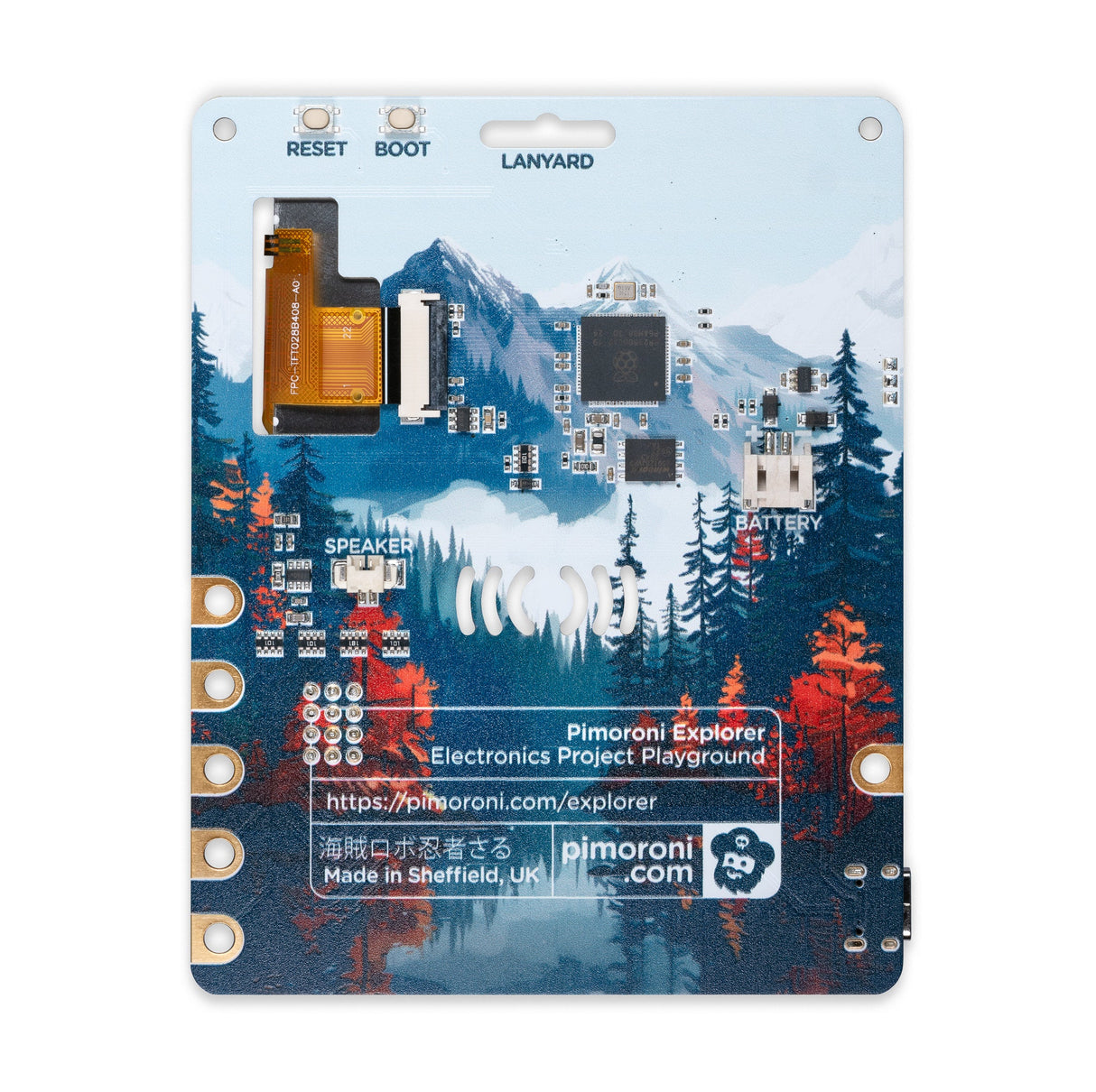Pimoroni Explorer
Pimoroni Explorer - Board Only is backordered and will ship as soon as it is back in stock.
Couldn't load pickup availability

Call us on 1300 240 817 between 10 AM and 4 PM on weekdays or email team@littlebird.com.au .
The Fastest Shipping
The Fastest Shipping
We ship faster because we built our own shipping 🤖 robot.
Pi Australia is operated by Little Bird, and we go to great lengths to ship your orders, often within minutes.
You can view shipping options and pricing at checkout without logging in.
For orders over 500g (such as bulky items), shipping may cost more than the initial estimate.
We deliver across Australia, and here are the options (based on your location; view them on the cart page):
- Standard Post: Starting at $7 (6+ business days, with tracking)
- Express Post: Starting at $11 (2+ business days, with tracking)
- Same Day Delivery: Available for Sydney orders.
- Non-metro WA, NT, SA, and TAS: May take an additional 2+ days.

- a convenient mini breadboard for wiring up components
- servo headers
- analog inputs
- a built in speaker for making beeps and boops
- plenty of general purpose inputs/outputs
- connectors for attaching crocodile leads
- Qw/ST connectors for attaching I2C breakouts
- Pimoroni Explorer
- a Multi-Sensor Stick - a fancy new all-in-one super sensor suite for environmental, light and movement sensing
- A selection of different coloured LEDs to get blinky with (including red, yellow, green, blue, white and RGB)
- A potentiometer (for analog amusements)
- 3x 12mm switches with different coloured caps
- 2x continuous rotation servos
- 2x 60mm wheels for attaching to your servos
- an AAA battery holder (you'll need to supply your own batteries)
- Velcro to stick the battery holder to the back of Explorer
- 20x pin to pin and 20x pin to socket jumper wires for making connections on your breadboard
- Qw/ST cable to plug in the Multi-Sensor Stick
- a nice silicon USB-C cable
- Powered by RP2350B (Dual Arm Cortex M33 running at up to 150MHz with 520KB of SRAM)
- 16MB of QSPI flash supporting XiP
- 2.8” IPS LCD screen (320 x 240 pixels)
- Driver IC: ST7789V
- Luminance: 250 cd/m2
- Active area: 43.2 x 57.5mm
- USB-C connector for programming and power
- Mini breadboard
- Piezo speaker
- 6x user-controllable switches
- Reset and boot buttons
- Easy access GPIO headers (6x GPIOs and 3x ADCs, plus 3.3V power and grounds)
- 6x crocodile clip terminals (3x ADCs, plus 3.3V power and grounds)
- 4x 3-pin servo outputs
- 2x Qw/ST (Qwiic/STEMMA QT) connector
- 2-pin JST-PH connector for adding a battery
- Lanyard slot!
- Includes 2x desktop stand feet
- Fully-assembled (no soldering required)
- Programmable with C/C++ or MicroPython
- Dimensions: approx 107mm x 85mm x 16mm (H x W x D, assembled)
- We'd suggest bending the two metal tabs on the included potentiometer sideways (or removing them with side cutters) so they don't get in the way when you try and plug the pins into your breadboard.
- If you're having difficulty getting the 'legs' on the switches to slot securely into the holes of your breadboard, try straightening them out with pliers.
Payment & Security
Payment methods
Your payment information is processed securely. We do not store credit card details nor have access to your credit card information.










